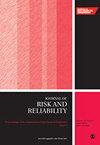迈向更安全的航空:GA-XGBoost-SHAP在事件认知和模型可解释性中的应用
IF 1.8
4区 工程技术
Q3 ENGINEERING, INDUSTRIAL
Proceedings of the Institution of Mechanical Engineers Part O-Journal of Risk and Reliability
Pub Date : 2023-11-04
DOI:10.1177/1748006x231205498
引用次数: 0
摘要
飞行事故的机理复杂,导致预测模型鲁棒性和可解释性较差。在对飞行事件进行全维度描述的基础上,在预测模型中加入可解释模块,实现预测模型的准确性、稳定性和可解释性。首先,采用采样法进行不平衡处理,并采用遗传算法进行特征选择;然后将这些结果作为预测模型的输入。其次,建立了基于极限梯度增强算法(XGBoost)的事件严重程度预测模型,以无、轻微、严重、致命、完全5类作为预测标签;实际数据验证表明,该模型具有良好的鲁棒性和优越性。最后,引入SHapley加性解释(SHAP)来解释事件严重程度与输入特征之间的相关性,并测量特征的重要性。结果表明,该方法具有较高的预测精度和鲁棒性。可以为航空运行管理部门应对突发事件提供一定的决策参考,了解事件的深层规律,促进主动安全管理范式的形成。本文章由计算机程序翻译,如有差异,请以英文原文为准。
Toward safer aviation: Application of GA-XGBoost-SHAP for incident cognition and model explainability
Flight incidents are characterized by complex mechanisms, leading to poor prediction model robustness and explainability. Based on the full-dimensional description of flight incidents, the explainable module is added to the prediction model to achieve its accuracy, stability, and explainability. Firstly, imbalance processing is performed employing the sampling method, and a genetic algorithm (GA) is applied for feature selection; these results are then considered as prediction model input. Secondly, an extreme gradient boosting algorithm (XGBoost)-based incident severity prediction model is established with five categories of none, minor, serious, fatal, and total as prediction labels; real data is used for validation, and the model shows good robustness and superiority. Finally, the SHapley Additive exPlanation (SHAP) is introduced to explain the correlation between incidents severity and input features and to measure feature importance. The results show that the proposed method has higher prediction accuracy and robustness. Which can provide some decision-making reference for aviation operation management departments to emergencies, learn the deep-seated law of incidents, and promote the paradigm of active safety management.
求助全文
通过发布文献求助,成功后即可免费获取论文全文。
去求助
来源期刊

Proceedings of the Institution of Mechanical Engineers Part O-Journal of Risk and Reliability
ENGINEERING, MULTIDISCIPLINARY-ENGINEERING, INDUSTRIAL
CiteScore
4.50
自引率
19.00%
发文量
81
审稿时长
6-12 weeks
期刊介绍:
The Journal of Risk and Reliability is for researchers and practitioners who are involved in the field of risk analysis and reliability engineering. The remit of the Journal covers concepts, theories, principles, approaches, methods and models for the proper understanding, assessment, characterisation and management of the risk and reliability of engineering systems. The journal welcomes papers which are based on mathematical and probabilistic analysis, simulation and/or optimisation, as well as works highlighting conceptual and managerial issues. Papers that provide perspectives on current practices and methods, and how to improve these, are also welcome
 求助内容:
求助内容: 应助结果提醒方式:
应助结果提醒方式:


